As technology moves more toward immersive experiences, such as VR and AR, as well as more realistic in-game experiences on other platforms, there is an increasing need for surround sound mixing. It has already been part of the cinema experience for quite a while, but now the boundaries have to be pushed to create something even more modern, thus requiring even more complex production/mixing techniques. This article gives creative tips and lists mostly open-source surround mixing software, as well as some paid options. There are not so many surround plugins available on the market, and most of them come at a pretty hefty price. It is not uncommon to see surround plug-in suites selling even for 1-2 thousand dollars. With a little bit of creativity, more layering, some coding knowledge and resourcefulness, it is possible to make high-quality surround mixes without breaking the bank.
IEM Plug-In Suite
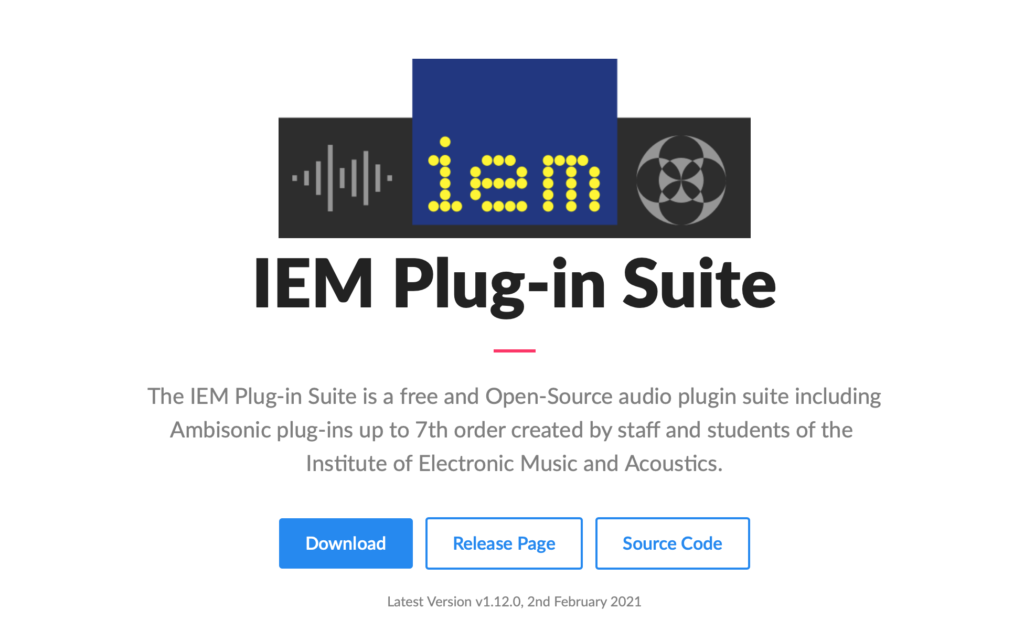
The first and obvious choice that we were already shown in our classes is the IEM Plug-In suite. It can work with up to 7th order Ambisonics and provides the perfect base for a good surround mix. It contains the following plug-ins: AllRADecoder, BinauralDecoder, CoordinateConverter, DirectionalCompressor, DirectivityShaper, DistanceCompensator, DualDelay, EnergyVisualizer, FdnReverb, MatrixMultiplier, MultiBandCompressor, MultiEncoder, MultiEQ, OmniCompressor, ProbeDecoder, RoomEncoder, SceneRotator, SimpleDecoder, StereoEncoder and ToolBox. Each of the plug-ins have a lot of options, just be careful with CPU usage- the reverb for example can be quite intense, so you might want to choose an FDN size of 32 instead of 64 if you are having issues. If this suite doesn’t contain enough plug-in types to unleash your creativity, the rest of article lists other great options that could be combined well with the IEM Suite.
VISR Production Suite
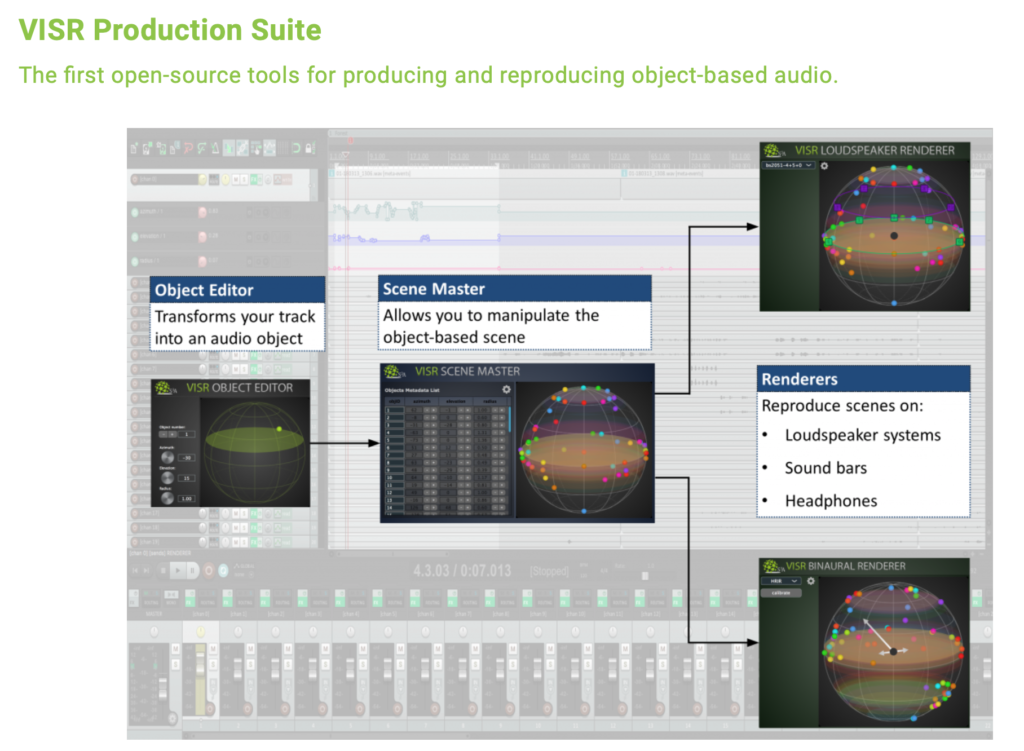
The VISR Production suite is special because it is the first open-source suite for producing and reproducing object-based audio. Object-based differs from channel-based mixing in the way that it is scalable, future-proof, and adaptable for any type of user system, which provides a new level of interaction and personalisation. Right now the suite is compatible with Reaper, but it will soon be available for use with Ableton and Logic as well, which is very exciting news, being an avid Ableton user myself! The suite is available to download in the VST3 format. Just make sure to have the appropriate version of Python installed- it is required for the Binaural Renderer plug-in.
MCFX v0.5.11 – Multichannel Audio Plug-in Suite
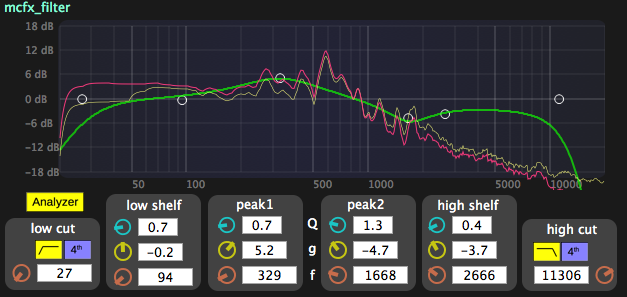
The mcfx plug-in collection has tons of different plug-ins, including the convolver, which is very useful and necessary for creating convincing spaces and atmospheres. This is yet another free resource that we discussed in class. Note the most of the open-source variants will be a bit glitchy, and unfortunately due to that, I was not able to install this suite. So, if it works on your machine, it’s definitely worth it.
Envelop 4 Live
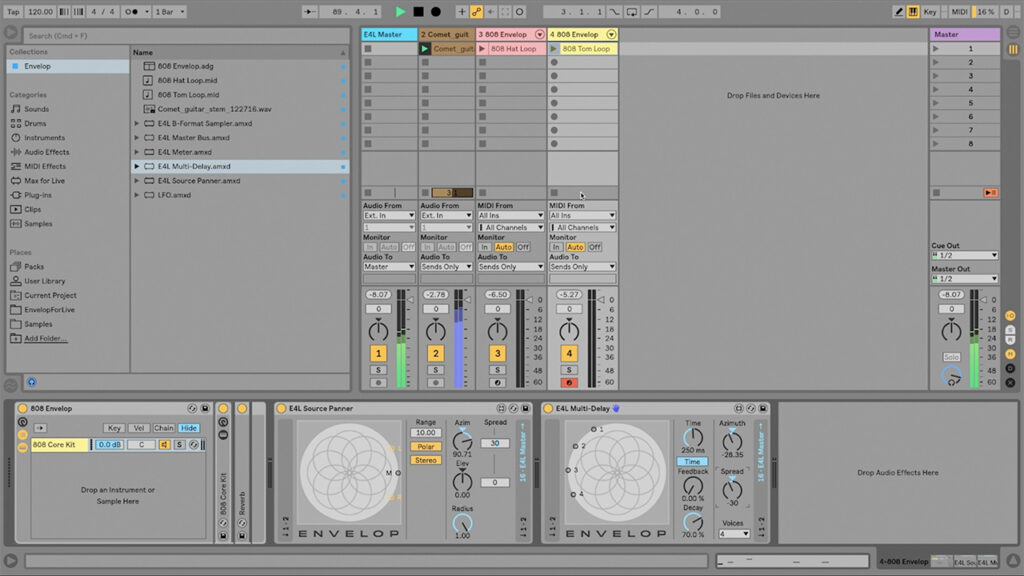
Envelop 4 Live is a collection of Max devices that can be used in Ableton to create spatial audio. Normally, the Ableton mixer is only able to do stereo mixes, but there is a binaural mixer in the plug-in suite which enables working with binaural audio in up to 3rd order ambisonics. This is not as much as the aforementioned plug-ins, but it still gives you cool capabilities and can be used for interactive VR sound creation.
Waves 360 ° Ambisonics
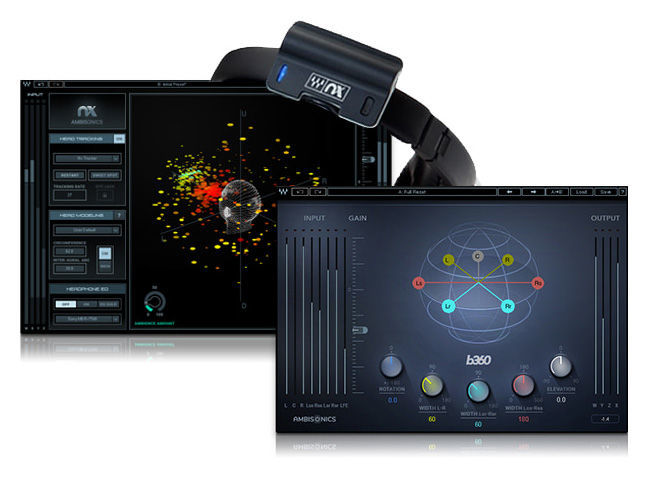
The Waves ambisonics suite is a paid one, but I included it because Waves plug-ins are so popular and they often have discounts. The current price is 399 USD. Some of the features of this bundle:
B360 Ambisonics Encoder, Nx Virtual Mix Room, and Nx Head Tracker. Mix stereo and mono elements into Ambisonics B-format. Convert surround mixes into 1st-order Ambisonics B-format. Precise positioning and easy placement of elements in a 360° mix. Intuitive user interface for a familiar-feeling workflow. Adjustable Width, Rotation, and elevation. Compatible with AmbiX. Includes AmbiX-FuMa and FuMa-AmbiX converter. Virtual acoustically optimised mix room for use in recording or mixing with headphones. Enables surround mixes via headphones. Individually coordinated parameters can be saved. 360° Head-tracking with selectable sources. Adjustable room dimensions and speaker positions.
This suite really has some amazing tools, which is not surprising. Waves has always had some awesome industry-standard plug-ins. The price is definitely worth it for anyone who can afford to splurge, especially when there is a discount.
Using Stereo Plug-Ins
Believe it or not, if if feels like the surround plug-ins currently available are not enough, or if you want the specific sound of a certain reverb (for example) modelled from special analogue gear, then you will have to creatively use stereo plug-ins inside a surround mix. This will enable you to obtain that unique colouring you love so much about certain plug-ins. I sure have my own staple plug-ins that I couldn’t imagine producing without. And with some effort, I don’t have to give them up when doing an ambisonic mix! You might want to do 2-3 layers of the same reverb at different pre-delay or reflection times and surround panning in order to simulate a realistic space using stereo plug-ins. This requires some technical knowledge if you want to achieve realism. If you are only looking to create a “cool-sounding” effect, “eyeballing it” will be enough. For the more precise way of working, you will have to make calculations based on desired room size, material and similar. The calculations will not be super-precise, as the coefficients of absorption you can find online are only the average, and not accurate for the same material across different brands. Room reflections can be calculated more accurately though. It will require knowledge of how fast sound takes to reach a wall and then back to our ear, as well as how big the delay between our left and right ear is (in order to model realistic positions of objects). You will also have to take into consideration how many reflections will there be in the room you imagined.
Lastly, here is a video from Waves describing how stereo and surround plugi-ns can be used creatively together. This specific video showcases 5.1 surround mixing, but the same trick (with even higher fidelity) can be applied to any higher order ambisonics mix too:
Sources:
https://www.waves.com/hardware/360-ambisonics-tools
https://www.waves.com/ambisonics-explained-guide-for-sound-engineers